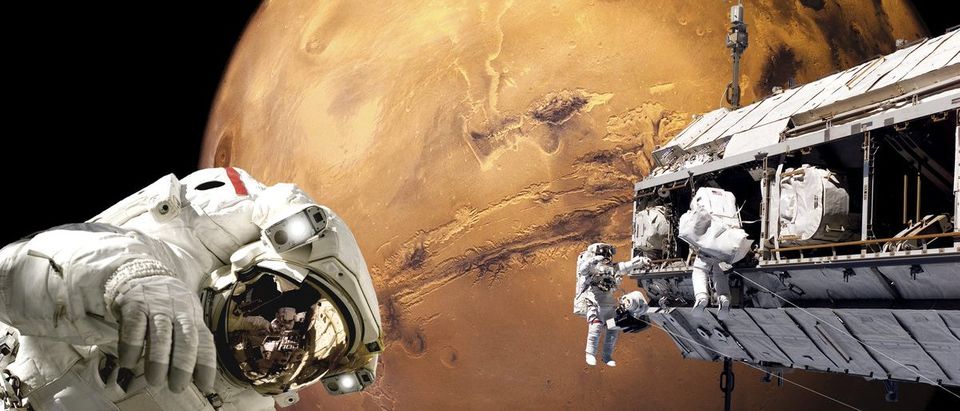Six scientists just finished a year-long stint living on the Red Planet Sunday.
Well, they weren’t actually on Mars. They instead lived in a tiny dome simulator in Hawaii that’s just 36 feet wide and 20 feet tall, intended to see if a crew of three men and three women could live in close quarters over an extended period of time.
After exiting the dome, the German physicist, a French astrobiologist, and four Americans — a pilot, an architect, a doctor, and a soil specialist — said they were looking forward to getting back to normal life, like going to the beach and eating fresh fruit. Each scientist worked on a research project for a year in the dome while trying to avoid personal conflicts.
The dome closely simulated the conditions of Mars, even simulating the 20-minute communications lag that would occur when relaying a message to and from Mars.
“I can give you my personal impression which is that a mission to Mars in the close future is realistic. I think the technological and psychological obstacles can be overcome,” Cyprien Verseux, the French astrobiologist, told Phys.org
Crew members on year-long mock Mars mission finally released from Hawaiian habitat https://t.co/TnBG7OchG8 pic.twitter.com/4pBFKyiA2S
— The Verge (@verge) August 29, 2016
NASA spent $1.2 million on the dome study, but it was run through the University of Hawaii. The simulation was the second-longest of its kind next to a mission that lasted 520 days in Russia. NASA plans to conduct three similar experiments in the near future. The space agency estimates that an actually manned Mars mission would take between one and three years to carry out.
NASA currently plans to send real astronauts to Mars in 2030. The total costs of current plans to send Americans to Mars comes out to roughly $35 billion spent by 2025 to arrive in 2030. America is currently better prepared to visit Mars than it was to visit the Moon in the 1960s, according to a study by NASA’s Johnson Space Center. The rocket intended to take American astronauts to Mars in 2030 passed its final full-scale tests in late June.
NASA already has plans to put a large manned space station in orbit above Mars by 2028. The station will remotely operate rovers, analyze samples off dirt and rock and even make short trips to Mars’s two moons.
Send tips to andrew@
All content created by the Daily Caller News Foundation, an independent and nonpartisan newswire service, is available without charge to any legitimate news publisher that can provide a large audience. All republished articles must include our logo, our reporter’s byline and their DCNF affiliation. For any questions about our guidelines or partnering with us, please contact licensing@dailycallernewsfoundation.org.


